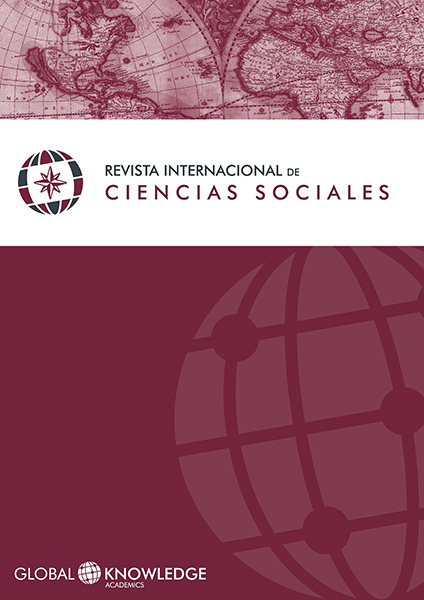Social and Ideological Complexity in Baja California Sur: an Approach
DOI:
https://doi.org/10.37467/gka-revsocial.v5.372Keywords:
Complexity, Subjectivity, Ideology, Migration, MediaAbstract
Understanding sudcalifornian society today requires the adoption of a perspective that is anchored in the complex thought, given the fact that during the last two decades of the twentieth century it has been the recipient of multiple elements that have served as catalysts for changes and setbacks in the construction of subjectivity. We witness the emergence of advances in terms of what is understood as “development” from an economic point of view, based on the opening to domestic and foreign investment; politically and ideologically we lurch from side to side, with the citizens' vote alternating between personalities deeply entrenched in the community more than being based on concrete political proposals. “Values” in terms of morality and traditions emphasise, on one side, the respect and tolerance which have characterised Sudcalifornia at least for the second half of the twentieth century; but, on the other hand, are skewed towards shaping a society that could be called neoconservative, for it adopts positions and values already vindicated by other societies in the heart of the country.
Downloads
Global Statistics ℹ️
|
463
Views
|
285
Downloads
|
|
748
Total
|
|
References
Abbot, E. A. (1999). Planilandia. Una novela de muchas dimensiones . España: Ed. Torre de Viento.
Almada, R. (Comp). (2010). Difuminando el rancho. Identidades emergentes en Los Planes, BCS. México: UABCS, Gobierno del Estado de BCS, ISC.
Bastida, A. (23 de mayo de 2013). El psiquiatra que “descubrió” el TDAH confesó antes de morir que “es una enfermedad ficticia”. Bebés y más. Recuperado de: http://www.bebesymas.com/salud-infantil/el-psiquiatra-que-descubrio-el-tdah-confesoantes-de-morir-que-es-una-enfermedad-ficticia.
Berger, P. y Luckmann, T. (2006). La construcción social de la realidad. Buenos Aires: Amorrortu.
Castells, M. (2010). Comunicación y Poder . España: Alianza Editorial.
Ciurana, E. R. (1997). Individuo Complejo. Comlejidad, 3, pp. 31-34.
Delgado Díaz, C. (Comp). (2005). Bioética y Medio Ambiente. Disponible en: Manuscrito en http://www.cubaenergia.cu/genero/ambiente/a23.pdf.
Lenk, K. (1982). El Concepto de Ideología. Buenos Aires: Amorrortu.
León, M. y González, I. (29 de julio de 2013). En México viven 53.3 millones de pobres, revela Coneval. El universal. Recuperado de: http://www.eluniversal.com.mx/finanzascartera/2013/pobreza-coneval-personas-939000.html
Lotman, Y. (1996). La Semiósfera La semiótica de la cultura. España: Cátedra.
Maturana, H. y Varela, F. (1995). De máquinas y seres vivos. Chile: Ed. Universitaria.
Moigne, J. L. (2010). Complejidad y Ciudadanía, Ciencia y sociedad. http://www.pensamientocomplejo.com.ar/docs/files/le%20moigne_complejidadciudadania-ciencia-y-sociedad.pdf.
Moreno, J. C. (2007). Fuentes, Autores y Corrientes que trabajan la Complejidad. http://online.upaep.mx/campusTest/ebooks/ManualIniciacion.pdf.
Morin, E. (1982). El Método. Tomo 1. La Naturaleza de la Naturaleza. España: Cátedra.
Morin, E. (2005). Epistemología de la complejidad. En F. Schnitman Dora, Nuevos paradigmas cultura y subjetividad. Argentina: Paidós. DOI: https://doi.org/10.30827/Digibug.7253
Morin, E. (9 de enero de 2011). Las noches están preñadas y nadie conoce el día que nacerá. Le Monde.
Morin, E. (2007 a). Introducción al pensamiento complejo . España: Gedisa.
Morin, E. (2010). Introducción a una política del hombre. España: Gedisa.
Najmanovich, D. (2005). Estética del pensamiento complejo. Revista Andamios. http://www.redalyc.org/articulo.oa?id=62810202.
Pacheco G., R. (2007). La ciudadanía intercultural como objetivo de una educación democrática radicalizada. Complexus, 3 (1), pp. 52-87.
Downloads
Published
How to Cite
Issue
Section
License
Those authors who publish in this journal accept the following terms:
-
Authors retain copyright.
-
Authors transfer to the journal the right of first publication. The journal also owns the publishing rights.
-
All published contents are governed by an Attribution-NoDerivatives 4.0 International License.
Access the informative version and legal text of the license. By virtue of this, third parties are allowed to use what is published as long as they mention the authorship of the work and the first publication in this journal. If you transform the material, you may not distribute the modified work. -
Authors may make other independent and additional contractual arrangements for non-exclusive distribution of the version of the article published in this journal (e.g., inclusion in an institutional repository or publication in a book) as long as they clearly indicate that the work was first published in this journal.
- Authors are allowed and recommended to publish their work on the Internet (for example on institutional and personal websites), following the publication of, and referencing the journal, as this could lead to constructive exchanges and a more extensive and quick circulation of published works (see The Effect of Open Access).













